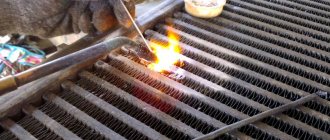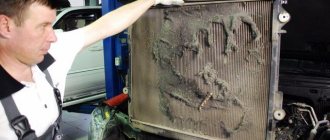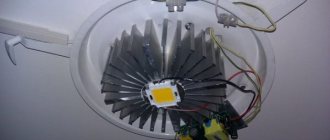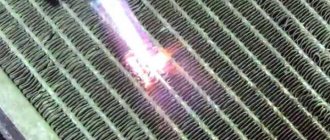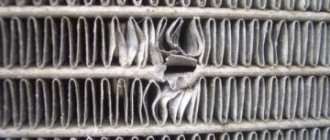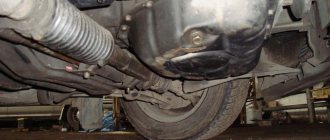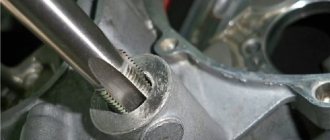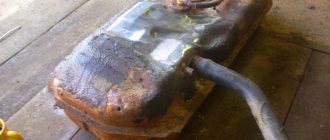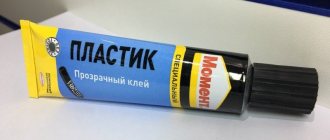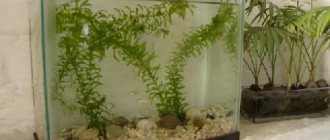If the entire block is not needed, cut the required amount crosswise with a knife.
Any person at least once in his life has been faced with the need to repair radiators, pipes, expansion tank and other components of the heating system. Even twenty years ago, any heating circuit and batteries in it were repaired only by hot welding. Today, the modern market offers a quick and effective way to eliminate leaks and holes in any piece of heating circuit equipment. In this case, you no longer have to use welding at elevated temperatures. Well-known methods have been replaced by a new technology - cold welding for cast iron batteries, bimetallic and aluminum radiators, plastic and steel pipes of the heating system.
Is repair always possible?
A radiator leak detected early is easier to repair because the cause of the failure is a small crack. A defect identified in time is easier to eliminate, and the restored device will last for many more years.
To reinforce the adhesive layer, it is possible to use simple plastic mesh Source Samsvar.ru
How to detect a leak?
If the engine begins to overheat frequently, and the coolant that was recently poured into the tank quickly disappears somewhere, it is necessary to urgently diagnose the radiator for holes. To find out where the hole is, you need to dismantle the radiator and carefully inspect it.
But it is not always possible to find the hole visually. Then you should use other diagnostic methods. So, how to check a radiator for leaks:
- To do this, all openings of the device are closed with plugs.
- The part is then lowered into a suitable container of water.
- Next, you need to observe - if bubbles appear, then there is a breakdown in those places on the radiator.
Diagnosing leaks from the pipes or from the heat exchanger itself will not be a problem. But if no fluid leaks are observed, and the temperature of the antifreeze or antifreeze quickly rises to critical values during movement, then it is much more difficult to find out the cause. This situation usually occurs when there is not enough coolant or the radiator is not working efficiently. If traces of coolant are found under the hood, it is necessary to urgently repair the radiator.
Basic methods for eliminating leaks
Before starting repair work, you should decide on the restoration method. Most often, damage is eliminated using:
- gluing. This method is chosen to eliminate minor cracks. To successfully solve the problem, pay attention to the composition of the glue: the substance must be selected according to the material of which the radiator body is made;
- cold welding. The adhesive mass contains epoxy resin and additives in the form of iron and other compounds. Repairs using cold welding occur efficiently and quickly. Despite the ease of use, a leak can be eliminated in a short time by forming a reliable seam at the crack site.
Methods of use
To repair pipes, you need to prepare everything you need - the welding agent itself, acetone or alcohol, sandpaper, rags and clamps. The method of sealing radiators varies somewhat depending on the type of welding - liquid or plastic. It is important to choose a suitable product that is suitable for pipes under pressure (metal or polypropylene). Next, you need to prepare and mix the material, and you should work faster with liquid products.
Welding application methods:
- simply sealing the defect with a piece of mass, flattened and kneaded with your fingers;
- the use of special fiberglass fabrics, threads for wetting with epoxy, followed by wrapping with rubber, wire or without it;
- gluing onto a large defect covered with a metal patch.
If the leak is strong, you can make the composition even more durable with your own hands. You need to take any aluminum or bronze part, grind it a little over paper, obtaining metal powder. It needs to be added to the epoxy mixture, which is then used to saturate the turns of thread or fabric.
Application of glue
Only two-component adhesive mixtures are suitable for repairing a plastic radiator. They cope well with situations where the crack in the radiator is large enough or it is not possible to connect the parts of the case due to a lack of small fragments. If a small crack is being repaired, simply mix the glue components and apply it to the crack in two layers.
In some cases, a crack appears in a hard-to-reach place. In this case, the sealant is applied along the entire length of the radiator Source Chebo.pro
How to seal a car radiator
For a long time, mustard powder has been a folk remedy for repairing an important device in a car’s cooling system. They poured it into the radiator, and the flow of water quickly spreads inside the case. Under the influence of high temperature, the mustard quickly softened and covered all small and large cracks.
Chemicals based on different components act on the same principle. The advantage of using substances is the rapid elimination of the problem. There are several disadvantages:
- the engine cooling system may completely fail;
- the radiator may become clogged;
- The country of manufacture and the composition of the product are not known, which means there is no guarantee.
Cold welding
This epoxy resin-based adhesive is excellent for repairing any plastic parts - just apply the adhesive and wait until it dries completely. Cold welding can also be used as an additional protective layer over a patch of regular two-part adhesive.
To eliminate a leak at the junction of the pipe, it is best to use cold welding Source B2b-instrument.ru
The process of soldering aluminum products
Soldering an aluminum engine cooling radiator is an effective solution for eliminating various damages. But it is better not to carry out such repairs yourself. Soldering an engine cooling radiator is a rather complex and labor-intensive process. There are also many nuances to preparing flux. It is best to choose a powerful soldering iron - at least 50 W. It should be warmed up well before use.
If the radiator has thick walls, it is also advisable to warm them up. The solder must contain at least 50% tin. You can use POS-61. If there is less tin, then you should not expect high quality from soldering.
Flux is applied to the surface in a thick layer. Soldering is done in a circular motion, and the solder is literally rubbed into the damaged surface. This is a reliable way to repair cracks.
Copper radiators are repaired with more powerful devices with POS-60 and POS-40 solders. As for the technology, it is no different from the aluminum soldering process.
Internal radiator repair using chemicals
There are special compounds on sale that can be used to restore the tightness of the radiator without extra effort. This chemical is a powder poured inside the radiator. Under the influence of water and high temperature, the particles of the composition swell and seal minor cracks in the body. In auto shops, this product is known as “powdered radiator restorer.”
Appearance of a sealing patch made from two-component adhesive Source Drive2.ru
Advantages and disadvantages
The technology allows you to eliminate pipe leaks with high reliability. This procedure is safe to perform, which cannot be said about conventional welding. Other benefits are:
- convenience, ease of the technique even for beginners;
- excellent seam quality, which depends mainly on the type of material, and not on the speed of work;
- no need to purchase special tools, equipment, machinery and expensive materials;
- minimum energy consumption;
- fire, anti-explosion properties of epoxy;
- low cost of repairs;
- Availability of cold welding - adhesives are sold in any store.
The technology also has disadvantages. Welding of this type is not designed for too high loads - pressure, high heat. Therefore, if there is a serious defect in a pipe or radiator, it is better to use hot welding or replace the area completely. It is important to follow the preparation measures - otherwise the quality of the weld will decrease. The durability of cold welding is lower than that of standard welding - repaired pipes will not last for many years, but will require new repairs. In fact, such repairs are considered by specialists to be a temporary measure.
conclusions
There are several ways to eliminate emergency leakage of heating radiators:
- using a self-tapping bolt;
- using a cement-plaster cast;
- using a rubber pad with wire or a clamp;
- using fabric impregnated with waterproof and heat-resistant glue;
- using a special sealant;
- using welding.
All of these methods of eliminating leaks are temporary measures that make it possible to have time to purchase new heating devices and plan their replacement.
The leak is repaired using a regular bandage or strip of fabric and epoxy glue. The bandage is impregnated with glue and tightly wrapped around the leak site. After the glue has dried, the repaired area is painted the same color as the battery. This “ambulance” ensures tightness for 1-2 years.
How to seal a heating radiator Miraculously, a problem with an aluminum heating radiator arose when frosts set in throughout Russia. Moreover, the radiator leaked late at night. I woke up several times at night because the heating radiator was making noise. I also thought that this was not without reason and was very similar to depressurization. Alas, I was not mistaken - in the morning there was a decent puddle under the radiator on the laminate floor. Initially I thought that the problems were related to the faucet, but then I discovered swollen paint on the side surface of the radiator from under which water was oozing. I was able to determine the location of the leak by the swollen paint. Having removed the swollen paint with a flat screwdriver, I saw the cause of the leak - two small holes. Two holes in the left sections of the radiator. Most likely, the microscopic hole appeared a long time ago, since just a year ago, a noise similar to a clicking emanated from this battery. I kept blaming Mayevsky's damaged faucet, but even after replacing the faucet, the noise did not stop.
What to glue with?
After searching for information on the Internet, I decided to buy cold welding. There was no choice, so I took what was in the store - “Almaz Universal Cold Welding Adhesive.” Almaz Cold Welding Adhesive Previously, I had the opportunity to use this glue to repair a leak in a steel heating pipe under pressure of about 2 atmospheres. It was not possible to completely eliminate the leak, since it was not possible to drain the water from the system and properly degrease the surface of the pipe at the place where the glue was applied.
Equipment:
- Plastic tube packaging;
- Glue wrapped in film;
- Instruction insert.
What does Almaz universal glue:
- Parts made of ferrous metals;
- Parts made of non-ferrous metals;
- Plastics;
- Glass;
- Ceramics;
- Tree;
- Marble;
- Concrete;
- Granite;
- Plexiglas.
Be sure to look at the manufacturing date on the back of the insert - the glue has a shelf life of two years. The shelf life of cold welding does not exceed two years. The adhesive is two-component - before mixing, the components are inert to each other. The adhesive is two-component. Visually it looks like a brown core and a white shell
Instructions for using Almaz welding adhesive:
Clean off dirt, degrease and sand the parts at the joints. Cut off the amount of compound required for repair, thoroughly mix its components with each other with wet hands (use gloves) until a working mass of a uniform color is obtained. The composition should warm up in your hands and become plastic and sticky. Immediately apply the composition to the surfaces to be glued, if necessary, fix them for 15-20 minutes with a clamp or tourniquet. Curing time is 1 hour, after which the composition can be processed, drilled, threaded, painted. Final strength is achieved after 24 hours, after which it can be subjected to structural loads. Wrap the remaining adhesive with film, secure with an elastic band and pack in a tube for reuse.
Gluing process
Before gluing the radiator, I turned off the taps on it and waited until water stopped flowing from the leak. The heating radiators are equipped with bronze half-turn taps with an American nut. Thanks to this, you can close the taps and dismantle the radiator without draining the water from the system. If necessary, you can always loosen the American nut to quickly drain the water. For these purposes, it is convenient to keep a plumbing wrench on hand. When the gluing process began, the surface near the damaged area was dry. In principle, Almaz cold welding can be glued to a wet surface, but I prefer a dry one. Alcohol applied to a cotton pad was used as a degreaser. The adhesive area was degreased with alcohol applied to a cotton pad. After cutting off the glue and mixing the components, I got a ball with a diameter of about 15 mm. The composition is ready for use. Cold welding was first applied by hand and then pressed tightly to the radiator using the tip of a screwdriver. It doesn’t look very neat, but the glue is applied between the fins of the radiator, where it is still not visible
To improve the quality and speed up gluing, the composition applied to the radiator was heated using a household hair dryer for 5-10 minutes.
Heating with a hairdryer allows you to get better bonding and speeds up the hardening process of the composition. In principle, after 10 minutes, the glue has hardened considerably. However, he decided not to rush and opened the taps only after an hour. The leak has now been eliminated.

